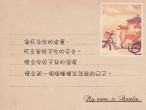
校长与英语老师打架作文【一】
Directions: For this part, you are allowed 30 minutes to write a letter to the university president. You should write at least 120 words based on the outline given below in Chinese:
1. 学校教学应该注重学生学习方法的培养。
2. 学校应该丰富学生的校园生活
A Letter to the University President
Dear Sir,
I am writing to put up some suggestions concerning our teaching and campus life.
As a sophomore from the Math Department, I am quite satisfied with the present condition of my university, but I餯 like to say that there is still some room for improvement.
First, I believe that more attention should be paid to the guidance of our study methods. To some extent, university students are capable of studying by themselves, but more often than never, we find ourselves at a loss as to choose good books to read and appropriate topics for our research. It is clear that we need some advice from our teachers. If our teachers can lecture more on how to learn by yourself for us, especially for the freshmen, our skills will be further improved.
Second, more activities should be conducted to make our campus life more colorful. I餸 sorry to say that the present life on campus is quite boring. Every day we have classes, read in the library, or stay in the dormitory. Life here is routine. We need more meaningful activities organized to enrich our college life and enable us to study more efficiently.
校长与英语老师打架作文【二】
Directions: For this part, you are allowed 30 minutes to write a letter to the university president. You should write at least 120 words based on the outline given below in Chinese:
1. 学校教学应该注重学生学习方法的\'培养。
2. 学校应该丰富学生的校园生活
A Letter to the University President
Dear Sir,
I am writing to put up some suggestions concerning our teaching and campus life.
As a sophomore from the Math Department, I am quite satisfied with the present condition of my university, but I餯 like to say that there is still some room for improvement.
First, I believe that more attention should be paid to the guidance of our study methods. To some extent, university students are capable of studying by themselves, but more often than never, we find ourselves at a loss as to choose good books to read and appropriate topics for our research. It is clear that we need some advice from our teachers. If our teachers can lecture more on how to learn by yourself for us, especially for the freshmen, our skills will be further improved.
Second, more activities should be conducted to make our campus life more colorful. I餸 sorry to say that the present life on campus is quite boring. Every day we have classes, read in the library, or stay in the dormitory. Life here is routine. We need more meaningful activities organized to enrich our college life and enable us to study more efficiently.
校长与英语老师打架作文【三】
(一)改写一般疑问句:
(1)原句中有be动词的,将be动词提前,其他顺序不变。
例如:Thisisacat.变为Isthisacat?
(2)原句中有情态动词的(can/may/shall/would)将情态动词提前,其他顺序不变。例如:Hewouldlikeapie.变为Wouldhelikeapie?
(3)原句中是一般动词的,在句首加助动词do或dose(用于主语是第三人称动词单数的句子),其他顺序不变。例如:Iplaytheguitar.变为Doyouplaytheguitar.
(4)原句中的some变any。
注:以情态动词开头的一般疑问句,并且要求对方做肯定回答的`some不变。
(5)原句中的第一人称改为第二人称。例如:Iamanurse.变为Areyouanurse?
(6)以dose开头的一般疑问句,原来动词的第三人称单数形式要变回原形。例如:Hereadsastorybook.变为Dosehereadastorybook?
(二)改写否定句:
(1)原句中有be动词的,直接在be动词后面加not。例如:Itisadog.→It’snotadog./Itisn’tadog.
(2)原句中有情态动词的,直接在情态动词后加not。
例如:Iwouldlikeahotdog.→Iwouldnotlikeahotdog.
(3)原句中是一般动词的,在一般动词前加don’t或doesn’t(用于主语是第三人称单数的句子),doesn’t后面用原型。例如:Iseethreehamburgers.→Idon’tseethreehamburgers.
原句中的some变any例如:Ihavesomebreadan
dmilk.→Idon’thaveanybreadandmilk.
(4)以let开头的祈使句,如果是letus或letme,直接在其后加not;如果let后面其他人称代词宾格(you、him、her、them、it)就在let后面加助动词don’t。例如:Letusgotothepark.→Letusnotgotothepark.再如:Letthemdohomework.→Don’tletthemdohomework.
(三)对划线部分提问:
对划线部分提问,就是先把一个陈述句的划线部分去掉,然后变为一个特殊疑问句:一是特殊疑问句+一般疑问句;
二是特殊疑问句+陈述句(对主语或主语的定语提问,therebe结构除外)
⑴划线部分是人,用who提问。
⑴划线部分是主语,用who提问,who后面的动词要用第三人称单数形式。如:Whois;Wholikes;Whohas?
方法:who+原句的剩余部分
例如:①HelenandMikearelisteningtomusic.
→Whoislisteningtomusic?
②Ihavesomemodelplanes.
→Whohasanymodelplanes?
⑵划线部分是表语,用who提问。
方法:Who+剩余部分的一般疑问句形式
⑵划线部分是事或者物,用what提问。
方法:what+剩余部分的一般疑问句形式。
注:如果原句是therebe句型,直接用What’s+地点状语来提问。例如:①Wewouldliketobuysomethingsforaparty.
→Whatwouldyouliketobuyforaparty?
②Therearealotofcakesintheplate.
→Whatisintheplate?
⑶划线部分是物主代词或名词所有格,用Whose提问。
方法:⑴划线部分是主语的定语时,Whose+剩余部分
例如:Ourclassroomisbright.
→Whoseclassroomisbright?
⑵划线部分是表语或表语的定语时,Whose+剩余部分的一般疑问句形式例如:①ThewomanisSuYang’steacher.
→Whoseteacheristhewoman?
注:对某部分的定语提问,被修饰的部分跟随特殊疑问句往前提②ThispurseisYangLing’s.
→Whosepurseisthis?
⑷划线部分是地点,用where提问。
方法:where+剩余部分的一般疑问句形式
例如:TheyarehamingaMathslessonintheclassroom..
→WherearetheyhavingaMathslesson?
⑸划线部分是“多少”,用howmany或howmuch提问。
方法:⑴句中是可数名词的用Howmany+剩余部分的一般疑问句形式例如:Therearefifteentreesintheplayground.
→Howmanytreesarethereintheplayground?
⑵句中是不可数名词的用Howmuch+剩余部分的一般疑问句形式例如:Ihaveaglassofjuiceforbreakfast.
→Howmuchjuicedoyouhaveforbreakfast?
⑹划线部分是时间,用when或whattime(具体的几时几分)提问。方法:⑴when+剩余部分的一般疑问句形式
例如:SuYangandSuHaiareathomeonSundaymorning.
→WhenareSuYangandSuHaiathome?
⑵问具体的时间直接用Whattimeisit?或What’sthetime?问
例如:It’sthreeforty-five.
→Whattimeisit?或What’sthetime?















